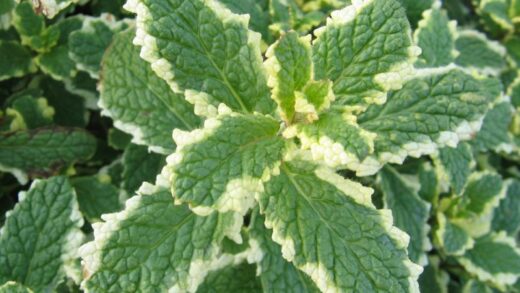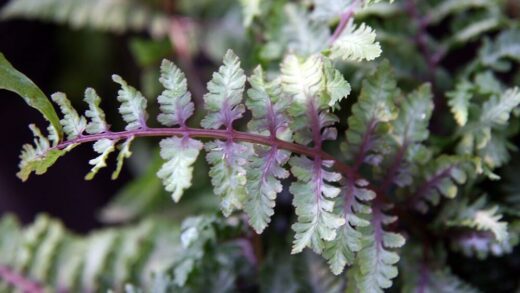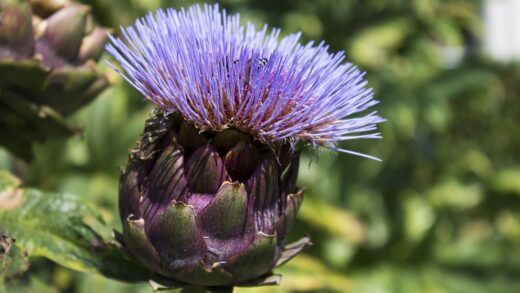To understand the nutrient needs of the Anatolian colchicum, one must first look to its growth cycle, which dictates when and how it utilizes essential minerals from the soil. As a cormous plant, its primary strategy is to store energy and nutrients within its underground corm to survive dormancy and fuel the initial bursts of growth for both flowers and leaves. Therefore, the goal of any fertilization program is not to feed the autumn flowers directly, but rather to nourish the spring foliage, which in turn replenishes and enlarges the corm for future seasons. This temporal separation between feeding and flowering is a crucial concept to grasp for effective nutrient management.
The most critical period for nutrient uptake is in the spring, from the moment the broad, green leaves emerge until they begin to naturally yellow and wither. During this relatively short window, the leaves are working as photosynthetic factories, converting sunlight into sugars. Simultaneously, the roots are actively absorbing minerals like nitrogen, phosphorus, and potassium from the soil. These minerals are essential for building healthy tissues and enzymes, and any surplus is transported down and stored in the corm for later use.
By the time the spectacular flowers emerge in autumn, the plant is running almost entirely on the reserves it accumulated the previous spring. The leaves are absent, and root activity is minimal, so any fertilizer applied at the time of flowering would be largely ineffective and wasted. The size, number, and overall vigor of the autumn blooms are a direct reflection of how well the plant was able to feed and store energy during the preceding spring. This makes the spring feeding window the single most important focus for the gardener.
In many garden soils that are reasonably fertile and rich in organic matter, Colchicum cilicicum can perform well for many years with little to no supplemental fertilization. However, in poorer, sandy soils or in situations where the plants have formed large, established clumps, a regular feeding schedule can be highly beneficial. Providing a balanced supply of nutrients ensures the corms do not become depleted over time, leading to more robust growth and a more prolific floral display year after year.
Understanding essential nutrients
Like all plants, the Anatolian colchicum requires a range of nutrients for healthy growth, but three are of primary importance: nitrogen (N), phosphorus (P), and potassium (K). Nitrogen is a key component of chlorophyll and proteins and is essential for vigorous, green leafy growth. While important, an excess of nitrogen can be detrimental to colchicum, as it can promote lush, soft foliage that is more susceptible to disease and may come at the expense of corm development and flowering. Therefore, a balanced approach to nitrogen is crucial.
More articles on this topic
Phosphorus (P) plays a vital role in energy transfer, root development, and flower formation. A sufficient supply of phosphorus is critical for establishing a strong and healthy root system in the spring, which is necessary for efficient water and nutrient uptake. It also contributes directly to the energy storage processes within the corm. Many soils have adequate phosphorus, but it can become depleted over time, especially in containers or heavily planted beds.
Potassium (K), often referred to as potash, is arguably the most important nutrient for cormous and bulbous plants. This element is a master regulator, crucial for overall plant health, disease resistance, and water regulation within the plant’s cells. Most importantly for colchicum, potassium is directly involved in the process of carbohydrate formation and storage. A generous supply of potassium in the spring ensures that the corm is packed full of energy, which directly translates to more numerous and larger flowers in the autumn.
Beyond these three macronutrients, the plant also requires a suite of micronutrients, such as iron, manganese, and boron, albeit in much smaller quantities. In a healthy soil that is regularly amended with compost or other organic matter, these micronutrients are typically available in sufficient amounts. Deficiencies are rare in garden settings unless the soil pH is extremely high or low, which can lock up certain minerals and make them unavailable to the plant. For this reason, maintaining a healthy, living soil is the best way to provide a full spectrum of necessary nutrients.
Choosing the right fertilizer
When it comes to selecting a fertilizer for Anatolian colchicum, the key is to choose a product that supports the plant’s specific needs, namely strong corm development rather than excessive leaf growth. For this reason, you should look for a balanced fertilizer that is not overly high in nitrogen. An ideal choice would be a granular, slow-release fertilizer formulated for bulbs or a general-purpose fertilizer where the numbers on the package (N-P-K ratio) are relatively even, such as a 5-10-10 or a 10-10-10 blend.
More articles on this topic
Organic fertilizers are an excellent option as they release their nutrients slowly and contribute to improving the overall health and structure of the soil. A top dressing of well-rotted compost or leaf mould applied in late winter is a superb way to provide a gentle, balanced feed. Alternatively, organic granular fertilizers like bone meal are a traditional choice for bulbs, as they are a fantastic source of phosphorus for root and corm development. Another excellent organic source of potassium is wood ash, which can be lightly sprinkled around the plants in spring, provided your soil is not already alkaline.
Liquid fertilizers can also be used, though they require more frequent application. If you choose this route, select a liquid feed that is formulated for tomatoes or flowering plants, as these are typically higher in potassium. Dilute the fertilizer to half the recommended strength and apply it to the soil around the plants every two to three weeks during the spring leaf-growth period. Avoid getting the concentrated fertilizer directly on the leaves, and always apply it to moist soil to prevent root burn.
Regardless of the type of fertilizer chosen, the principle remains the same: avoid high-nitrogen formulas. Fertilizers designed for lawns, for example, are extremely high in nitrogen and would be very detrimental to the health of your colchicum. They would encourage a surge of weak, floppy leaf growth that would be prone to disease and would signal the plant to focus on foliage at the expense of storing energy in the corm, ultimately leading to a disappointing floral display.
Application timing and method
The correct timing for fertilizer application is paramount and, as established, is concentrated entirely within the spring growing season. The best time to apply a granular, slow-release fertilizer is in late winter or very early spring, just as the tips of the leaves are beginning to emerge from the soil. Applying the fertilizer at this stage ensures that the nutrients will be available in the root zone as soon as the plant’s metabolic activity begins to ramp up, ready to be absorbed as the leaves expand.
To apply a granular fertilizer, carefully scatter the recommended amount evenly on the soil surface around the area where the colchicums are planted. Avoid letting the granules bunch up against the emerging leaves or the crown of the plant, as this can cause chemical burns. After scattering the granules, it is beneficial to gently scratch them into the top layer of soil with a hand cultivator or your fingers. This small step helps to integrate the fertilizer with the soil and prevents it from being washed away by heavy rain.
Following the application of granular fertilizer, it is important to water the area well if no rain is forecast. Watering helps to dissolve the granules and carry the nutrients down into the root zone where they can be accessed by the plant. This is a crucial step that activates the fertilizer and begins the process of nutrient release. For organic top dressings like compost, a layer of about 2-3 centimeters can be applied to the soil surface, and natural rainfall and soil organisms will work the nutrients down to the roots over time.
For those using a liquid fertilizer, applications should begin once the leaves are well-developed, perhaps 10-15 centimeters tall, and continue every few weeks until the foliage starts to show the first natural signs of yellowing. Once the leaves begin their senescence, fertilization should cease completely. The plant is now in the process of shutting down and transferring resources back to the corm, and it will no longer be taking up nutrients from the soil. Any fertilizer applied after this point would be ineffective.
The role of organic matter
While targeted fertilizers play a role, the long-term health and nutrient supply for Anatolian colchicum is best supported by maintaining a soil rich in organic matter. Materials like garden compost, well-rotted manure, and leaf mould are not just sources of nutrients; they are fundamental soil conditioners that improve the overall growing environment. Regularly incorporating organic matter creates a healthy, living soil ecosystem that benefits the plants in a multitude of ways beyond simple nutrition.
Organic matter acts as a slow-release reservoir of a wide range of essential nutrients and micronutrients. As microorganisms in the soil break down the compost or manure, they release these nutrients in a form that is readily available for plant uptake. This process is slow and steady, providing a constant, gentle feed throughout the growing season, which is far more beneficial than the sudden jolt provided by some synthetic fertilizers. This natural feeding process supports balanced and resilient growth.
Furthermore, organic matter is crucial for improving soil structure, which is vital for a cormous plant that demands good drainage. In clay soils, organic particles bind to the tiny clay platelets, forming larger aggregates and creating more pore space for air and water to move through. In sandy soils, the spongy nature of organic matter helps to retain moisture and nutrients that would otherwise leach away too quickly. This structural improvement ensures that the corm has the well-aerated, freely draining, yet moisture-retentive environment it craves.
The easiest way to build and maintain organic matter in your soil is to apply a top dressing or mulch of compost or leaf mould each year. The ideal time to do this is in late autumn or winter, after you have cleared away the last of the summer’s faded perennials. Spreading a few centimeters of compost over the bed will protect the soil over winter, suppress weeds, and allow the winter rains and soil life, like earthworms, to begin incorporating it into the soil profile, ensuring it is primed and ready for the colchicum’s spring growth.


















